TinyML is transforming how smart devices work by bringing artificial intelligence directly to small, everyday gadgets without needing constant cloud connections. This technology makes it possible for your fitness tracker to monitor your heart rate, your smart thermostat to learn your preferences, and agricultural sensors to optimize watering schedules—all while running on battery power for months.
This guide is for tech enthusiasts, IoT developers, product managers, and anyone curious about how AI can work on devices as small as a microcontroller. Whether you’re building the next smart home gadget or just want to understand how your wearable device gets smarter without draining its battery, you’ll discover the practical benefits of local AI processing.
We’ll explore the core functionality of TinyML and how it enables machine learning on microcontrollers with limited resources. You’ll learn about the key benefits of running AI locally on smart devices, including improved privacy, faster response times, and reduced power consumption. Finally, we’ll examine real-world applications that are already transforming industries—from smart home technology and wearable health devices to agricultural edge intelligence and environmental monitoring systems that make our cities smarter.
Table of Contents
Understanding TinyML and Its Core Functionality
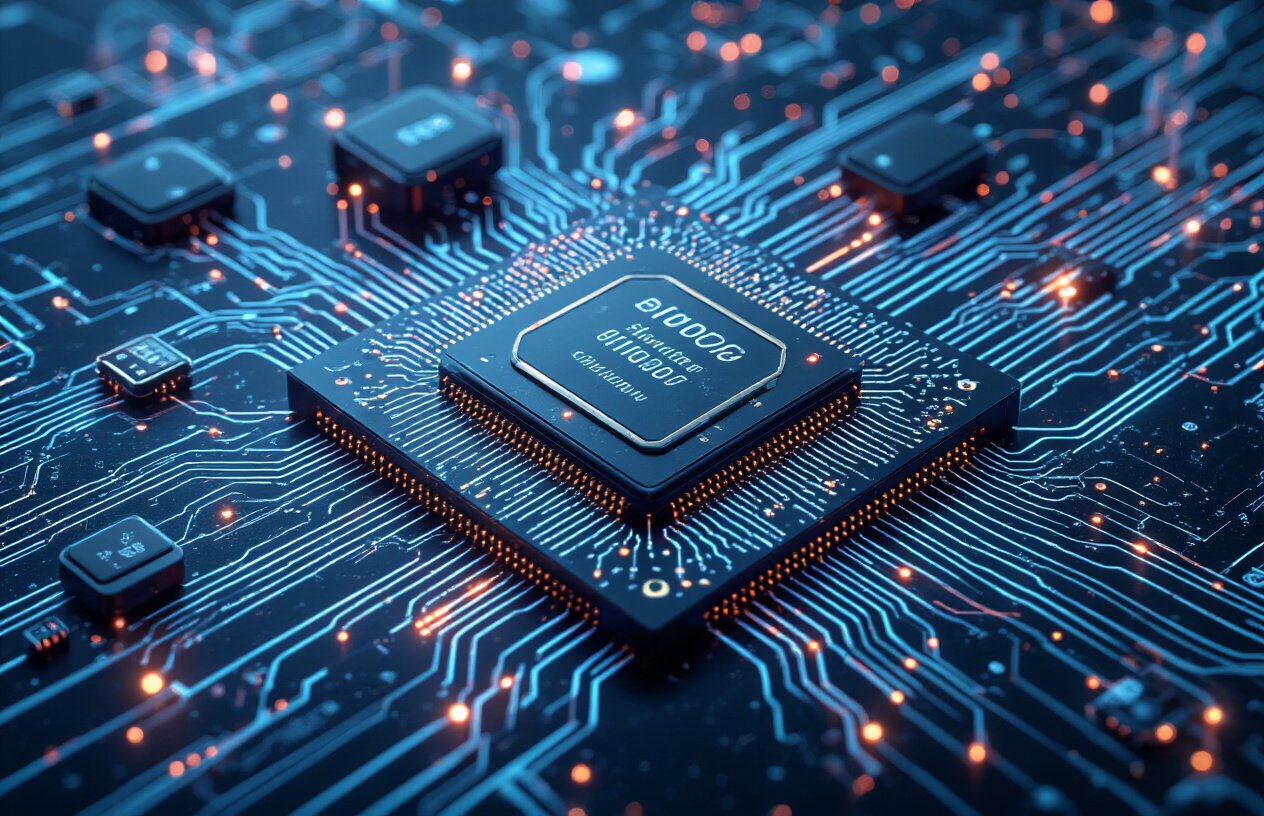
What TinyML is and how it differs from traditional machine learning
TinyML represents a revolutionary approach to artificial intelligence that brings machine learning capabilities directly to small, resource-constrained devices. According to TinyML.org, it’s defined as “a fast-growing field of machine learning technologies and applications including hardware, algorithms, and software capable of performing on-device sensor data analytics at extremely low power, typically in the mW range and below.”
The fundamental difference between TinyML and traditional machine learning lies in their operational requirements and deployment environments. Traditional machine learning models, particularly state-of-the-art architectures, demand significant computational resources and high-performance computing power, which has historically confined these applications to cloud-based systems. These models are not only computationally expensive to train but also require substantial resources for running inference.
In contrast, TinyML is specifically designed to operate on microcontrollers and other embedded devices with severe memory, storage, and processing limitations. While traditional ML relies on powerful servers and extensive infrastructure, TinyML enables on-device machine learning that can function on devices consuming power in the milliwatt range or below. This makes it ideal for battery-operated devices that need to function for extended periods without charging.
The core philosophy behind TinyML is enabling machine learning practitioners to “do more with less,” bringing AI capabilities to billions of everyday devices like home appliances and IoT gadgets without requiring expensive hardware or dependable internet connections.
How TinyML models are trained in the cloud and deployed locally
The TinyML workflow follows a hybrid approach that leverages the best of both cloud computing and edge AI capabilities. Initially, machine learning models undergo training in high-performance cloud environments using large datasets. This cloud-based training phase takes advantage of powerful computing resources and extensive data storage capabilities that are simply not available on edge devices.
During the training phase, data scientists and ML engineers can utilize sophisticated algorithms and neural networks to develop models that learn complex patterns from comprehensive datasets. The cloud infrastructure provides the necessary computational power to process massive amounts of training data and perform the iterative optimization required for model development.
Once the training phase is complete, the model undergoes a critical transformation process to make it suitable for deployment on resource-constrained devices. This involves converting the trained model into smaller, optimized formats specifically designed for embedded AI systems. The deployment phase represents where TinyML truly differentiates itself from traditional machine learning approaches.
TensorFlow Lite for microcontrollers (TF Lite Micro) stands out as one of the most popular frameworks for this deployment process. It was specifically engineered to implement machine learning on embedded systems with only a few kilobytes of memory. While Python remains the preferred language for building machine learning models during the training phase, TensorFlow Lite enables developers to deploy these models using C, C++, or Java without requiring internet connectivity on the target device.
The process of model optimization for resource-constrained devices
Model optimization represents the most critical phase in preparing machine learning models for TinyML deployment. This process involves several sophisticated techniques designed to compress and simplify models while maintaining their predictive accuracy within acceptable bounds.
Quantization serves as one of the primary optimization techniques, where the precision of model weights and activations is reduced from 32-bit floating-point numbers to 8-bit integers or even lower precision formats. This dramatic reduction in numerical precision significantly decreases memory requirements and computational complexity while typically maintaining acceptable model performance.
Model pruning represents another essential optimization strategy, involving the removal of neural network connections and nodes that contribute minimally to the model’s predictive performance. Through systematic analysis of weight importance and activation patterns, pruning techniques can eliminate redundant parameters, resulting in smaller model sizes without substantial accuracy loss.
The optimization process also includes model compression techniques that reduce the overall footprint of the trained model. This involves sophisticated encoding methods and parameter sharing strategies that maintain model functionality while dramatically reducing storage requirements.
Hardware compatibility considerations play a crucial role in the optimization process. TensorFlow Lite currently supports numerous microcontroller platforms, including Arduino Nano 33 BLE Sense, SparkFun Edge, STM32F746 Discovery kit, Adafruit EdgeBadge, Espressif ESP32-DevKitC, and Sony Spresense, among others. The optimization process must account for the specific memory, processing, and power constraints of these target platforms.
The ultimate goal of this optimization process is enabling AI without cloud connectivity while ensuring that the deployed models can perform real-time inference on smart device AI platforms with minimal power consumption and maximum responsiveness.
Key Benefits of Running AI Locally on Smart Devices
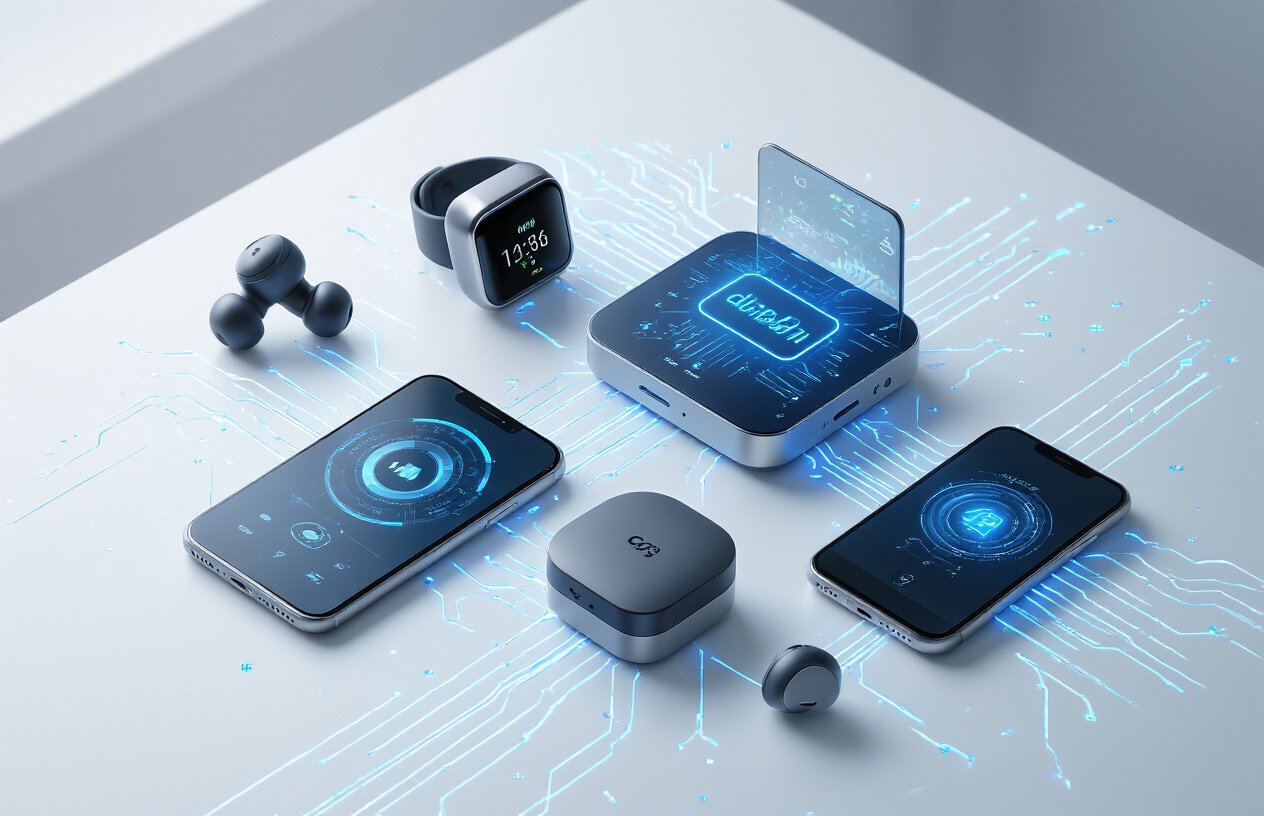
Ultra-low power consumption for battery-powered devices
Edge AI excels in power efficiency by conducting computations locally, minimizing data transmission over networks, and reducing reliance on energy-intensive cloud servers. This approach significantly benefits battery-operated embedded platforms and IoT devices that require careful balancing between performance and power constraints. TinyML applications leverage energy-efficient hardware designs specifically optimized for on-device machine learning, ensuring that smart devices can operate for extended periods without frequent battery replacements.
The power efficiency of edge AI systems stems from their ability to eliminate the constant energy drain associated with wireless data transmission to remote servers. By processing data locally, devices avoid the high power consumption typically required for continuous network communication, making them ideal for wearable AI technology and remote sensor networks where power management is critical.
Lightning-fast response times through local processing
Local AI processing delivers ultra-low latency by eliminating the need to send data to remote cloud servers for analysis. Edge devices can respond to events almost instantaneously, processing data in milliseconds rather than waiting for cloud-based responses. This real-time performance capability is crucial for applications requiring immediate decision-making, such as autonomous systems and industrial automation.
The speed advantage of edge AI becomes particularly evident in time-sensitive applications where even small delays can have significant consequences. By bringing intelligence closer to the data source, TinyML enables smart devices to make split-second decisions without the inherent delays associated with network transmission and cloud processing queues.
Enhanced privacy and security by keeping data on-device
Processing data locally on edge devices significantly reduces the risk of data breaches and unauthorized access during transmission. Sensitive information remains within the confines of the device, mitigating threats of data interception and unauthorized access that commonly occur during cloud communication. This enhanced privacy protection is particularly vital for applications handling personal health data, security footage, or proprietary industrial information.
Edge AI operations conduct most data processing locally, minimizing the volume of sensitive data sent to external locations or remote cloud servers. This approach addresses growing concerns around data privacy and security, making on-device machine learning an attractive solution for organizations handling confidential information across various industries.
Reduced latency by eliminating cloud communication delays
Edge AI significantly reduces latency by processing data locally on devices, eliminating the round-trip time required for cloud server communication. This immediate responsiveness enables real-time decision-making capabilities that are essential for mission-critical applications. Unlike cloud processing systems that must account for network transmission delays, variable server response times, and potential connectivity issues, edge AI systems deliver consistent, predictable performance.
The elimination of cloud communication delays proves especially beneficial in environments with limited or unreliable internet connectivity. Edge devices can continue operating autonomously without depending on continuous network access, ensuring uninterrupted functionality even in remote locations or during network outages. This reliability makes TinyML particularly valuable for agricultural edge intelligence, environmental monitoring systems, and industrial IoT applications where consistent operation is paramount regardless of network conditions.
Essential Applications Transforming Smart Home Technology
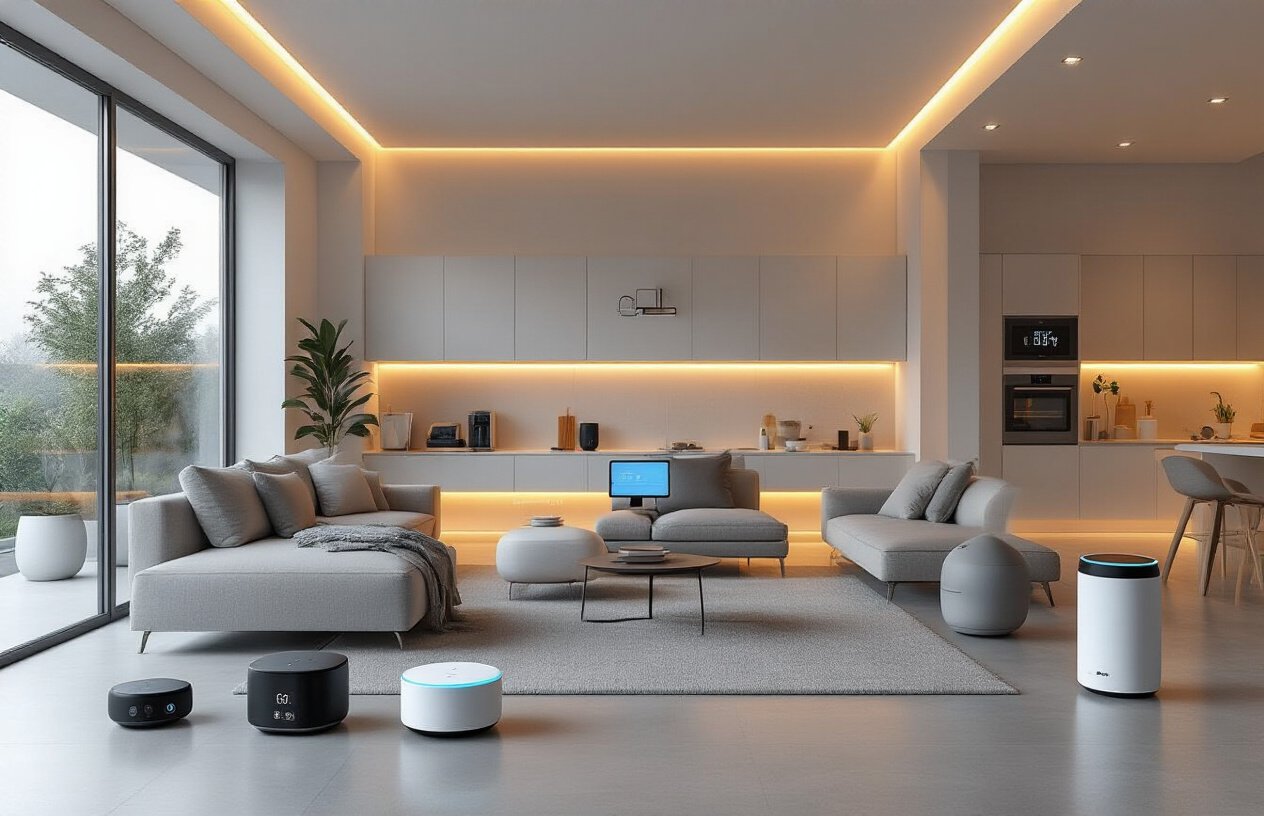
Intelligent thermostats that learn user preferences automatically
TinyML technology is revolutionizing how smart thermostats operate by enabling them to learn and adapt to user preferences through local AI processing. These intelligent systems utilize edge AI to analyze patterns in temperature adjustments, occupancy data, and daily routines without requiring constant cloud connectivity. By processing data directly on the device using machine learning on microcontrollers, these thermostats can make real-time decisions about heating and cooling optimization.
The power of TinyML applications in thermostats lies in their ability to detect subtle environmental changes and user behaviors. These devices continuously monitor room temperature, humidity levels, and occupancy patterns to build comprehensive profiles of household preferences. Through on-device machine learning, the thermostat learns when residents typically arrive home, their preferred temperatures for different times of day, and even seasonal adjustments they commonly make.
Energy efficiency becomes significantly enhanced when thermostats can predict user needs locally. Rather than relying on predetermined schedules or cloud-based algorithms, embedded AI systems enable these devices to make intelligent predictions about heating and cooling requirements. This localized intelligence ensures optimal comfort while minimizing energy consumption, as the system can preemptively adjust temperatures based on learned patterns without waiting for cloud processing delays.
Smart security cameras with real-time threat detection
TinyML benefits smart homes are particularly evident in security camera applications, where real-time threat detection capabilities operate entirely at the edge. These systems can differentiate between family members, delivery personnel, and potential intruders without sending sensitive footage to external servers. By implementing local AI processing, security cameras equipped with TinyML can analyze video streams instantly, identifying specific threats or harmless situations autonomously.
The technology enables smart security cameras to process visual data through edge computing for IoT devices, ensuring immediate response times that are crucial for security applications. Instead of uploading footage to cloud services for analysis, these cameras use optimized neural networks running on low-power hardware to detect motion patterns, facial recognition, and unusual activities. This approach not only enhances AI without cloud connectivity but also significantly improves privacy by keeping sensitive security footage local.
Real-time decision-making becomes possible through TinyML’s ability to run sophisticated algorithms on resource-constrained devices. These security systems can instantly trigger alerts when detecting genuine threats while filtering out false alarms caused by pets, moving shadows, or routine activities. The localized processing ensures that homeowners receive accurate notifications without the delays associated with cloud-based analysis, making TinyML-powered security cameras more reliable and responsive than traditional systems.
Automated lighting systems that adapt to usage patterns
TinyML transforms automated lighting systems by enabling them to learn and predict user behavior patterns through smart device AI capabilities. These systems analyze occupancy data, time-based usage patterns, and ambient light conditions to automatically adjust lighting without manual intervention. By utilizing embedded AI systems, smart lighting can detect when rooms are occupied and adjust brightness levels based on learned preferences for different times of day or activities.
The voice-controlled automation capabilities demonstrate how TinyML enhances lighting systems beyond simple scheduling. Using on-device machine learning, these systems can process voice commands like “Lights On” and “Lights Off” entirely offline, ensuring fast response times and maintaining privacy. The XIAO ESP32S3 Sense microcontroller exemplifies how machine learning on microcontrollers enables continuous listening for specific keywords while consuming minimal power.
Advanced lighting systems equipped with TinyML can implement sophisticated features such as gradual dimming based on circadian rhythms or automatic color temperature adjustments throughout the day. These TinyML applications learn individual preferences for different lighting scenarios, whether for reading, working, or relaxing, creating personalized environments that adapt seamlessly to user needs. The energy-efficient design with sleep modes ensures that these intelligent lighting systems operate continuously while maintaining ultra-low power consumption, making them ideal for battery-powered or solar-powered installations.
Revolutionary Impact on Wearable Health Technology
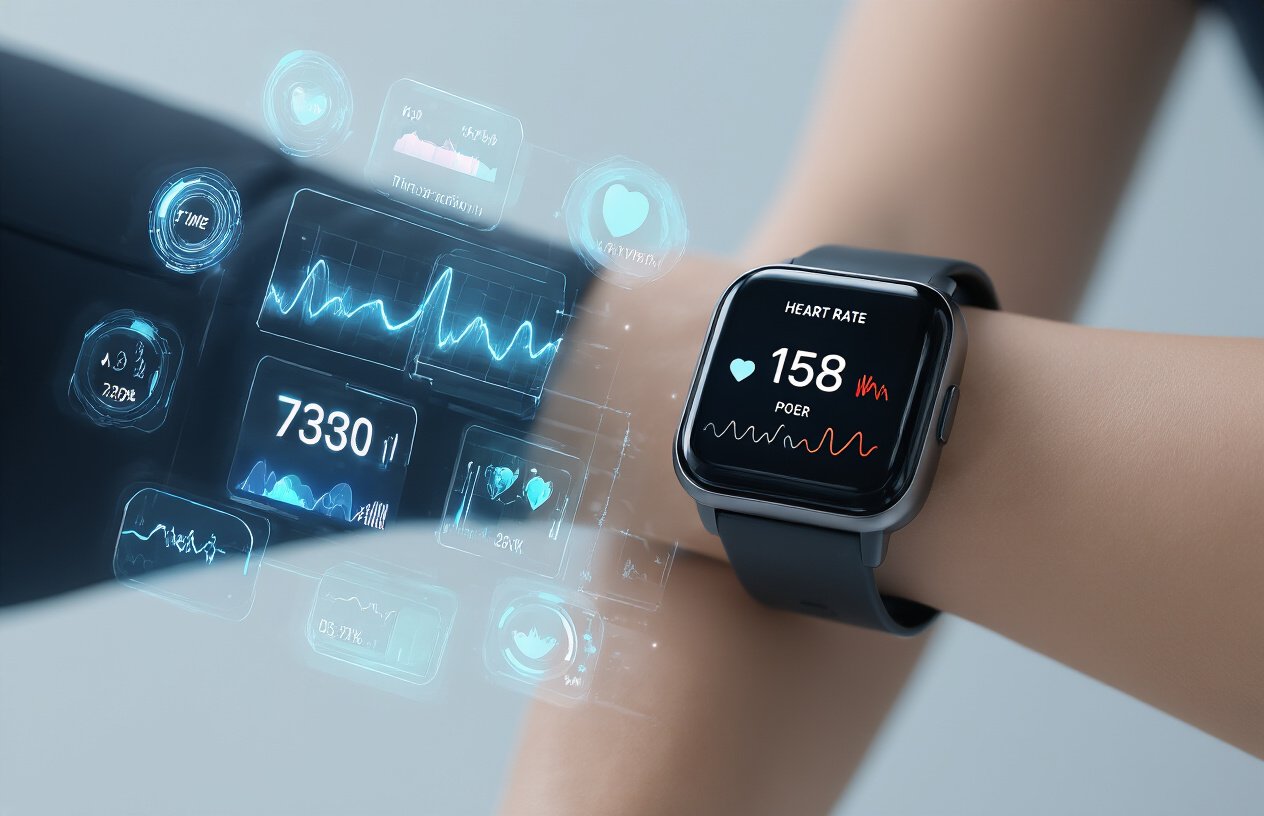
Continuous health monitoring with instant alerts
TinyML technology enables wearable health monitoring devices to perform real-time analysis and provide immediate alerts without requiring cloud connectivity. By implementing machine learning models directly on resource-limited devices such as microcontrollers and wearables, healthcare providers can achieve continuous patient health monitoring with unprecedented responsiveness.
The wearable AI technology leverages TinyML’s edge computing capabilities to analyze vital signs, temperature readings, and other health metrics locally on the device. This approach ensures low latency processing, making it ideal for time-sensitive medical applications where instant alerts can be life-saving. Unlike traditional cloud-based systems, these devices maintain reliability even when network connectivity is disrupted, ensuring continuous monitoring regardless of external conditions.
TinyML-powered wearables can detect anomalies in real-time, triggering immediate alerts for healthcare providers or patients when critical thresholds are exceeded. This capability is particularly valuable for patients with chronic conditions who require constant monitoring, as the devices can identify potential medical issues before they become severe emergencies.
Real-time fitness tracking and performance optimization
On-device machine learning transforms fitness tracking by enabling wearables to process complex movement patterns and physiological data in real-time. TinyML applications in fitness wearables provide personalized insights and performance optimization recommendations without the delays associated with cloud processing.
These devices utilize embedded AI systems to analyze movement patterns, heart rate variability, and other performance metrics instantly. The local processing ensures that users receive immediate feedback during their workouts, allowing for real-time adjustments to training intensity and technique. This immediate response capability is crucial for preventing injuries and maximizing workout effectiveness.
The edge AI approach also maintains user privacy by keeping sensitive fitness and health data on the device, eliminating concerns about personal information being transmitted to external servers. This local data storage provides enhanced security while delivering the sophisticated analytics users expect from modern fitness tracking technology.
Sleep pattern analysis and improvement recommendations
TinyML enables comprehensive sleep monitoring through continuous analysis of movement, heart rate, and other physiological indicators throughout the night. These machine learning on microcontrollers systems can identify sleep stages, detect disruptions, and provide personalized recommendations for improving sleep quality.
The technology processes sleep data locally, creating detailed sleep pattern analysis without requiring internet connectivity. This approach ensures that sensitive sleep data remains private while providing users with actionable insights about their sleep habits. The devices can identify trends over time, recognizing patterns that might indicate underlying sleep disorders or lifestyle factors affecting sleep quality.
By utilizing TinyML applications for sleep analysis, wearable devices can provide real-time interventions such as gentle vibrations to encourage better sleep positions or breathing patterns. The immediate processing capability allows for dynamic adjustments throughout the night, optimizing sleep quality in real-time rather than providing only post-sleep analysis.
Agricultural Innovation Through Edge Intelligence
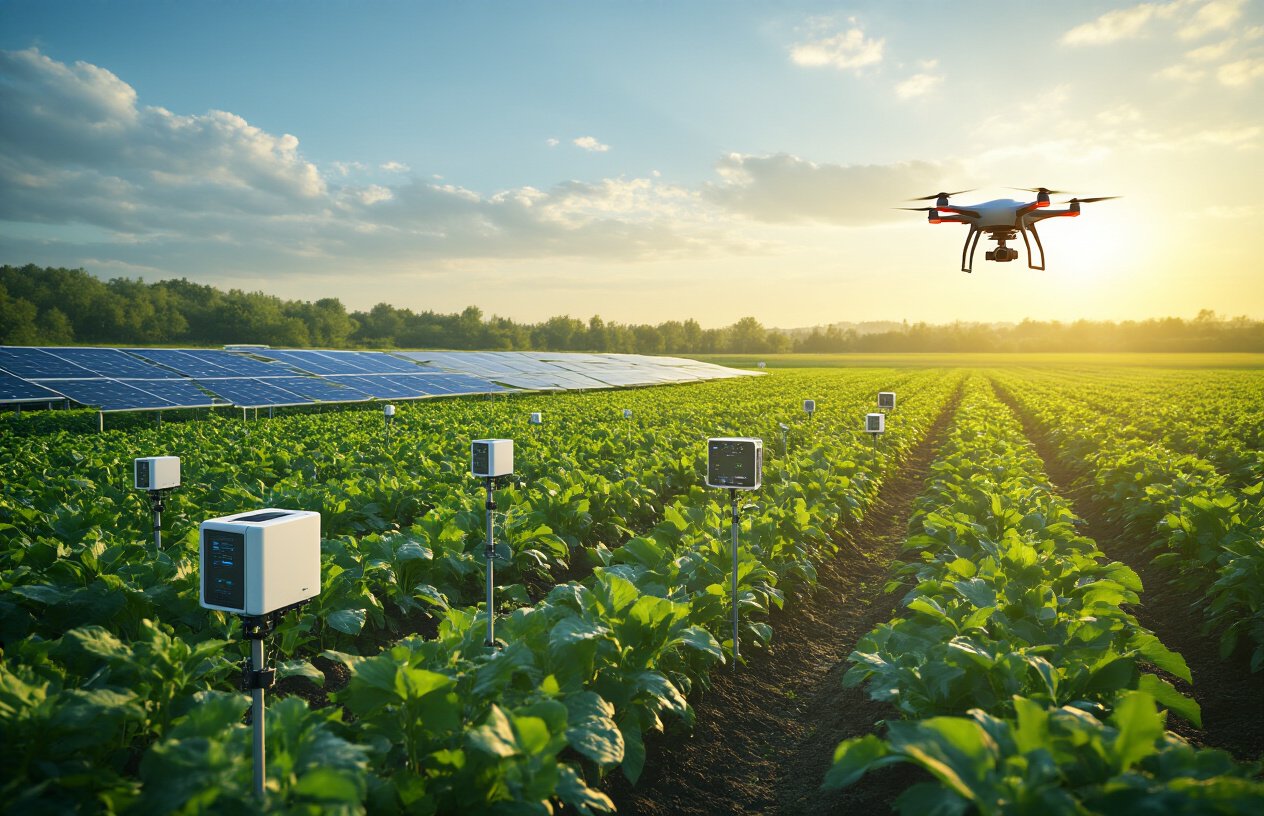
Smart soil monitoring for optimal crop irrigation
Building on the foundation of TinyML technology, agricultural edge intelligence revolutionizes precision farming through autonomous soil monitoring systems. A comprehensive TinyML-based solution demonstrates the practical implementation of on-device machine learning for smart agriculture, utilizing a Wio terminal equipped with ATSAMD51 microcontroller running ARM Cortex-M4F at 120MHz. This system integrates multiple sensors including Grove DHT22 modules for environmental monitoring, resistance-based Grove soil moisture sensors, and Grove water sensors for detecting rainfall and liquid levels.
The autonomous irrigation system operates independently without internet connectivity or cloud access, generating real-time notifications and automatic watering decisions based on trained ML models. Through 21 days of continuous data collection and processing via Edge Impulse framework, the system optimizes models using quantization and pruning techniques for efficient inference directly on the microcontroller. This edge AI approach enables the system to recognize specific environmental and soil moisture patterns, automatically initiating watering when climatic conditions and soil moisture levels indicate necessity, contributing significantly to precision agriculture and climate-smart practices.
Weather pattern analysis for farming decisions
The integration of TinyML applications extends beyond soil monitoring to encompass comprehensive weather pattern analysis for informed farming decisions. The autonomous agricultural system leverages DHT22 sensors with precise temperature monitoring capabilities ranging from -40 to 80°C with 0.5°C accuracy, and humidity detection spanning 0-99.9% RH with 2% accuracy. These environmental sensors work in conjunction with water sensors that detect rainfall, liquid leakage, and tank overflow through conductivity measurements.
The machine learning on microcontrollers processes environmental data locally, enabling real-time weather pattern recognition without external connectivity. This edge-based approach ensures continuous operation even in remote agricultural areas where internet access is limited or unavailable. The system’s ability to correlate temperature, humidity, and precipitation data allows for predictive analysis of weather conditions, helping farmers make proactive decisions about irrigation timing, crop protection, and resource allocation.
Automated crop health assessment and disease detection
Advanced TinyML technology demonstrates remarkable potential in automated crop health assessment through sophisticated Convolutional Neural Network (CNN) architectures deployed on microcontroller units. Research utilizing comprehensive datasets from Kaggle, Harvard Dataverse, and Mendeley showcases a CNN maize disease detection (MDD) system that integrates optimization techniques, data augmentation, batch size adjustments, and fine-tuning strategies for efficient maize leaf disease identification.
The deployment of this CNN-MDD model on MCU simulation achieves impressive performance metrics: latency of 7.60 ms, RAM usage of 726.60 KB, classifier flash size of 344.70 KB, and accuracy of 94.60%. These optimized parameters align perfectly with MCU specifications, highlighting practical deployment potential on low-cost edge devices like Arduino Ble 33 Sense. The system processes 12,344 raw images and 7,454 augmented images of healthy and diseased maize leaves, providing local farmers with swift, offline disease detection capabilities.
Comparative analysis between Edge Impulse and TensorFlow platforms reveals that Edge Impulse offers advantages in ease of use, reliability, and memory footprint, while TensorFlow provides greater flexibility and customization options. This embedded AI systems approach enables sustainable agricultural practices by delivering immediate crop health assessments without dependency on cloud connectivity, making advanced disease detection accessible to farmers in remote locations.
Industrial Applications Driving Operational Efficiency
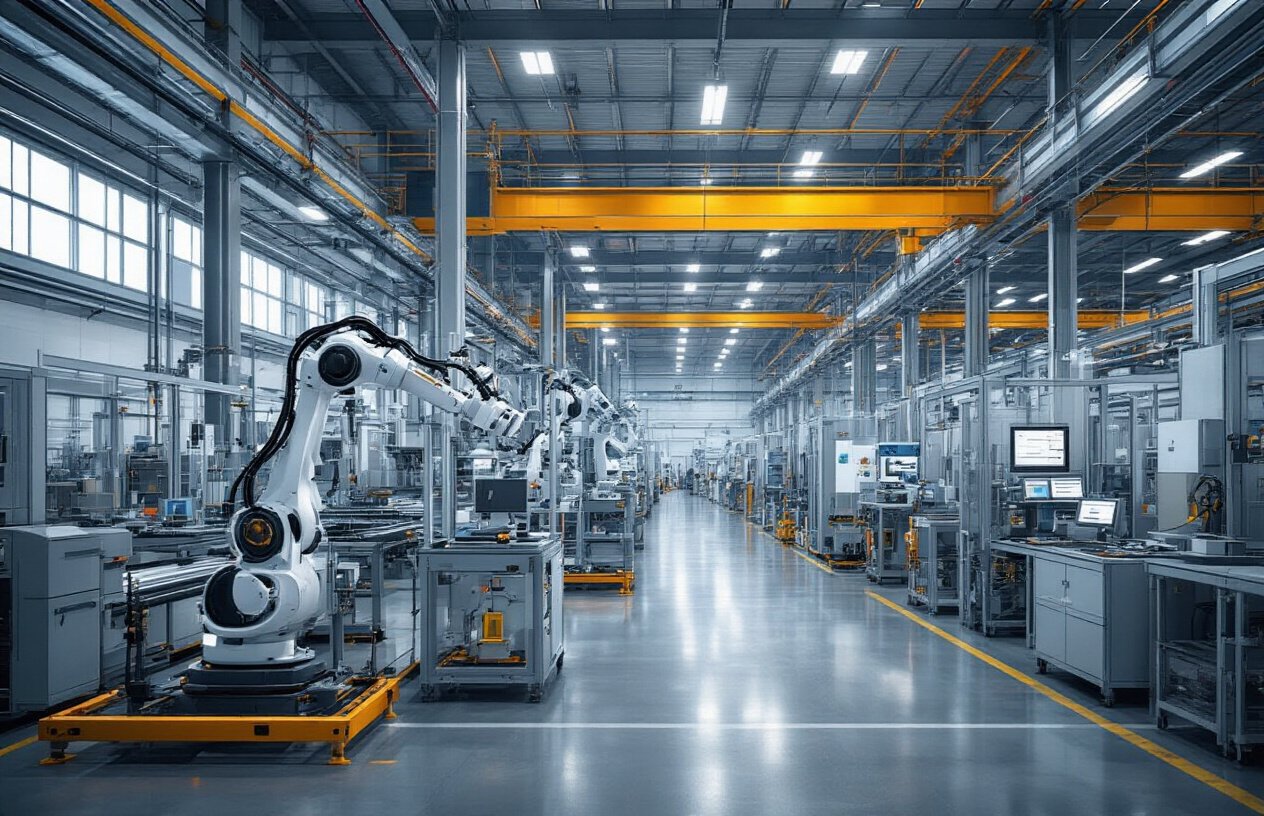
Predictive maintenance preventing costly equipment failures
Industrial environments leverage TinyML for predictive maintenance through sophisticated anomaly detection systems that operate directly on IoT consumer devices. The Deep Learning technique with TinyML Driven Real-time Anomaly Detection for Predictive Maintenance (DLTML-RTADPM) demonstrates how industrial IoT applications can autonomously identify unusual behaviors or patterns that diverge from regular equipment operation.
This advanced approach utilizes neural networks enhanced for resource-constraint environments, enabling real-time monitoring and proactive mitigation of potential malfunctions. The DLTML-RTADPM technique employs Z-score normalization for input data processing, followed by the Fennec Fox Optimization Algorithm (FFA) for optimal feature selection in high-dimensional datasets. The system implements gradient least mean squares with bidirectional long short-term memory (GLMS-BiLSTM) for precise anomaly detection, achieving an impressive accuracy rate of 98.11%.
Machine learning on microcontrollers ensures that equipment can detect irregular patterns without relying on cloud connectivity, providing immediate alerts for maintenance teams. This edge AI approach significantly reduces the risk of unexpected equipment failures, minimizing costly downtime and extending machinery lifespan through timely interventions.
Real-time quality control reducing production defects
With the foundation of predictive maintenance established, TinyML systems excel at implementing continuous quality control measures throughout production processes. The same anomaly detection principles used for equipment monitoring apply to product quality assessment, where embedded AI systems can identify defects or deviations from quality standards in real-time.
Industrial sensors equipped with TinyML capabilities continuously monitor production parameters, instantly flagging irregularities that could indicate quality issues. This on-device machine learning approach ensures immediate response to quality concerns without the latency associated with cloud-based processing. The deep learning techniques optimize detection accuracy while operating within the computational constraints of industrial IoT devices.
The Jaya optimization algorithm-based hyperparameter tuning process further enhances detection results, ensuring that quality control systems maintain high performance standards. By identifying defects at the point of production, manufacturers can prevent defective products from progressing through the supply chain, reducing waste and maintaining consistent quality standards.
Process optimization through intelligent sensor networks
Now that we have covered individual device capabilities, intelligent sensor networks powered by TinyML create comprehensive process optimization systems across entire industrial facilities. These networks consist of interconnected IoT devices that collectively monitor and analyze various aspects of industrial processes, from temperature and pressure variations to vibration patterns and energy consumption.
Edge computing for IoT enables these sensor networks to process data locally, making real-time decisions about process adjustments without requiring constant communication with centralized systems. The distributed intelligence allows for immediate response to changing conditions, optimizing efficiency while maintaining operational safety.
The feature selection capabilities of the Fennec Fox Optimization Algorithm ensure that sensor networks focus on the most relevant data points, reducing computational overhead while maintaining detection accuracy. This intelligent filtering enables continuous process monitoring and optimization, leading to improved operational efficiency, reduced energy consumption, and enhanced overall productivity in industrial environments.
Environmental Monitoring for Smarter Cities

Air quality tracking with automated response systems
Building upon the extensive applications of TinyML across various sectors, smart city environmental monitoring represents one of the most impactful implementations of edge AI technology. TinyML-enabled environmental sensors deployed throughout urban areas provide continuous air quality assessment without requiring cloud connectivity or high-power infrastructure. These low-power edge devices utilize machine learning algorithms to analyze real-time atmospheric data, including particulate matter concentrations, volatile organic compounds, and pollutant levels.
The automated response capabilities of TinyML systems enable immediate adjustments to urban infrastructure based on air quality readings. When sensors detect elevated pollution levels, the embedded AI algorithms can trigger automated responses such as adjusting traffic light patterns to reduce congestion, activating air filtration systems in public buildings, or sending alerts to city management systems. This real-time processing occurs directly on the microcontroller-based devices, eliminating the latency associated with cloud-based data processing while ensuring continuous operation even when network connectivity is compromised.
Pollution detection and immediate alert mechanisms
TinyML-powered pollution detection systems represent a significant advancement in environmental monitoring for smart cities, operating with remarkable efficiency on resource-constrained devices. These edge computing systems continuously analyze environmental data patterns to identify pollution spikes and anomalous air quality conditions in real-time. The machine learning models running on microcontrollers can distinguish between normal environmental fluctuations and genuine pollution events, reducing false alarms while maintaining high detection accuracy.
The immediate alert mechanisms built into these TinyML systems enable rapid response to environmental hazards. When pollution thresholds are exceeded, the on-device AI algorithms instantly generate alerts to relevant stakeholders, including city officials, environmental agencies, and affected communities. This local processing capability ensures that critical environmental information reaches decision-makers within seconds rather than minutes or hours, enabling swift implementation of pollution mitigation strategies such as industrial emission controls or traffic rerouting.
Climate monitoring for urban planning decisions
Smart city environmental monitoring through TinyML extends beyond immediate pollution detection to support long-term urban planning initiatives. These edge AI systems continuously collect and analyze climate data including temperature variations, humidity levels, and weather patterns using low-power sensors distributed across the urban landscape. The embedded machine learning algorithms process this environmental data locally, identifying climate trends and patterns that inform sustainable urban development strategies.
The integration of TinyML in climate monitoring enables city planners to make data-driven decisions about infrastructure development, green space allocation, and building placement based on real-time environmental insights. These systems provide continuous environmental assessment without the energy consumption and infrastructure requirements of traditional monitoring networks, making comprehensive climate monitoring feasible even in resource-constrained urban areas. The local processing capabilities ensure that critical climate data remains accessible for urban planning decisions regardless of network connectivity, supporting the development of more resilient and environmentally conscious smart cities.
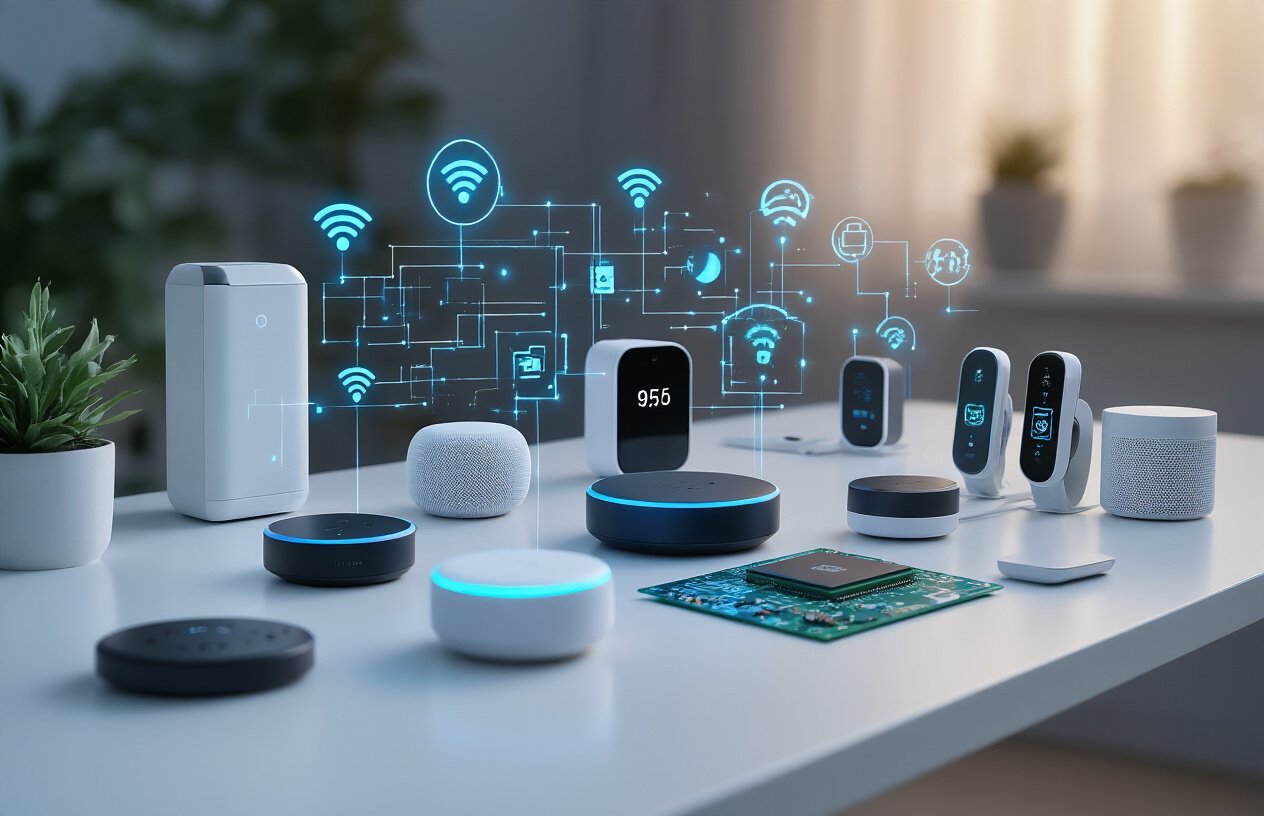
TinyML represents a transformative shift in how we approach artificial intelligence deployment, bringing powerful machine learning capabilities directly to our everyday devices. From smart home automation and wearable health monitoring to precision agriculture and industrial optimization, this technology enables real-time, local processing that enhances privacy, reduces latency, and minimizes power consumption. The ability to run AI models on resource-constrained devices without constant cloud connectivity opens up unprecedented possibilities for creating more responsive and efficient smart systems.
As TinyML continues to evolve, its impact will only grow stronger across industries. Organizations and developers should seriously consider integrating TinyML solutions into their IoT strategies to unlock the full potential of edge intelligence. Whether you’re looking to improve operational efficiency, enhance user privacy, or create more autonomous smart devices, TinyML offers a practical pathway to achieving these goals while reducing infrastructure costs and improving system reliability.





